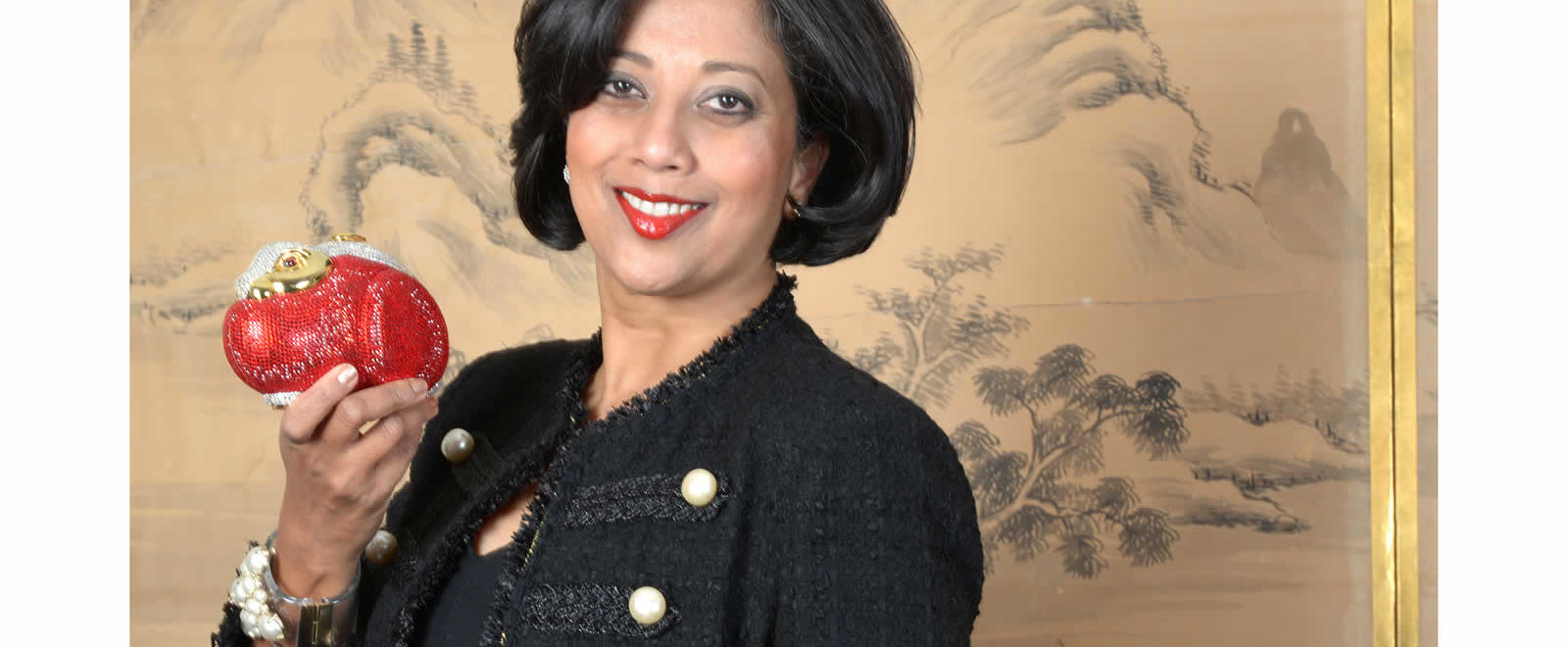SAINI KANNAN SEES MORE THAN CRAFTSMANSHIP AND STYLE IN HER HANDBAG COLLECTION. SHE SEES STORIES.
Story by Stacy Suaya ● Photographs by Axel Koester
IN INDIA, “SRINGARA”
“Madeleine Albright knew how to use sringara,” says Kannan, referring to the time the former U.S. ambassador to the United Nations wore a gold-and-diamond brooch in the shape of a coiled snake when she met with Iraqi officials, just after the Gulf War – her own, creative way of showing her discontent with Iraq’s behavior. Judith Leiber’s handbags aren’t antithetical to Albright’s pin. They are red carpet-ready, crystal-embellished objets d’art modeled after fanciful shapes: a box of French fries, a top-hatted penguin or a Sugarloaf pineapple, to name a few. And just like Albright, when Kannan wears one of her Leiber pieces – considered by many as more like jewelry than handbags – she sets out to make a point.
Enlarge
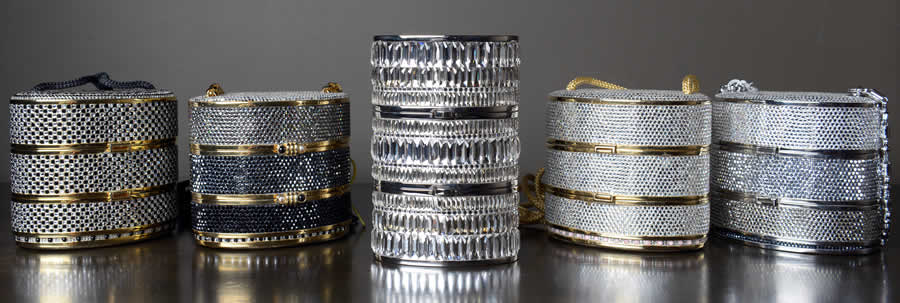
Kannan, a software industry consultant who lives with her husband in Irvine, Calif., was born in Mumbai. Her father was M.H.P. Rao, a noted engineer who designed nuclear reactors in India. At home, he had a penchant for Art Deco architecture and classical music. “My mother,” Kannan says, “stayed at home, but she had a great sensibility of home, dressing, etiquette and hosting, and entertaining, gardens, all of those really nice things.”
In the third grade, Kannan started cutting flowers to put in vases, sometimes adding fruits, nuts, seeds and twigs. Other times, shells, moss or algae. Then she started using unusual containers for her creations, like the cleaned-out gears from a car.
“My parents encouraged every kind of idiosyncrasy as a child growing up,” Kannan says. While Kannan studied solid-state chemistry and built a career in software, she continued to develop her artful eye, living in six countries and completing a second master’s degree of ikebana (the Japanese art of floral arranging) at the prestigious Ohara School in Tokyo.
DISCOVERING HER PASSION
In 1991, Kannan was living and working in Dubai and had developed an interest in collecting precious and non-precious costume jewelry. She was attending a jewelry show when she noticed a major diamond jeweler from New York. In the center of his store was a glass box.
“Inside was a really beautiful rectangular piece of a shiny, shiny object. And I was intrigued by the whole thing,” Kannan recalls. She asked the jeweler what it was, and he told her it was a handbag. “Then I asked him, ‘Can I buy it?’ ‘No.’ Everything was a no. And there was no internet, no Google, no iPhone, no camera, nothing. But on the last day when they were packing up and going, I showed up and got the name – Judith Leiber.”
Kannan promptly went to her jeweler to have a similar handbag custom-made. “But when I described it to the guy, he just said, ‘Put all your effort into finding out where that bag is and buy it rather than trying to make it because you just can’t. This isn’t just jewelry. It’s engineering. This is leathercraft. A whole bunch of things. Good luck.”
Enlarge
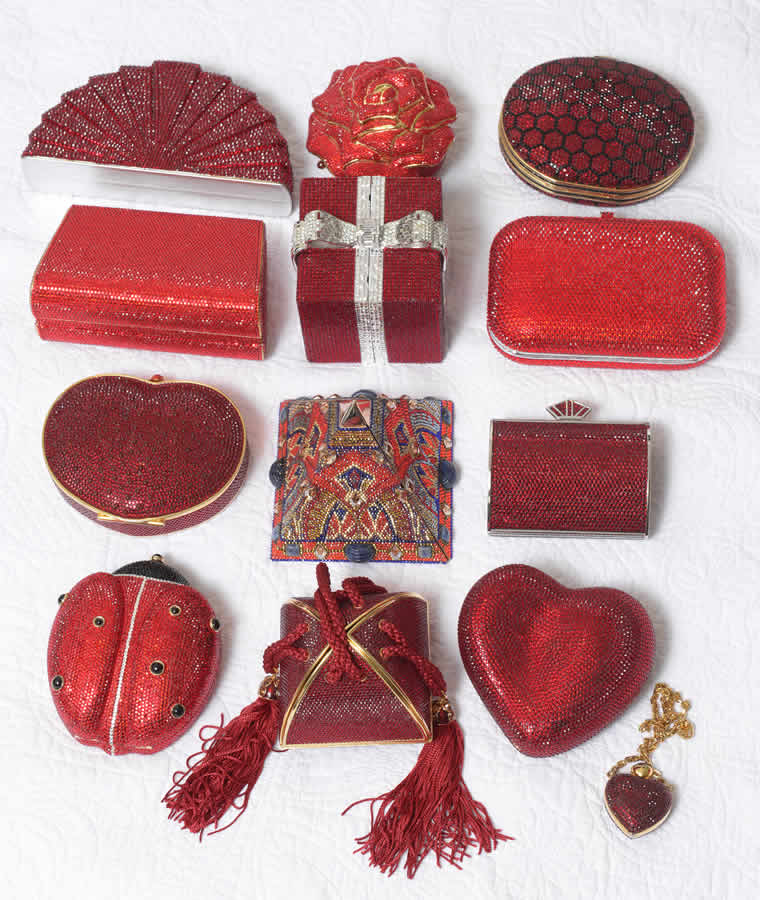
Thirteen years later, Kannan was living in Tokyo and browsing at a kimono shop when she saw the Judith Leiber that would become her first purchase – the “fluttering fan,” a maroon and gold minaudière with a red tassel. “That brick red was my color. I was in love,” she says.
When she first started collecting, Kannan wanted bags she could actually carry. “Initially, I wasn’t sure where I could take it. I didn’t know what was out there, and was basically an illiterate collector,” Kannan says.
She likens her learning curve to the art of calligraphy in Japan. “For the first year, all you do is watch the teacher draw and paint. You’re taking in the art and the process and the spirit and what’s in the artist’s mind, just imbibing that through nonverbal osmosis with no judgment. And then you can start describing it. It becomes dynamic. It’s beautiful, bright, huge, small, balanced. And then ‘Do I like it?’ ‘Do I love it?’ Then you go into your inner self and ask why you like it.”
Kannan began studying Judith Leiber bags and what spoke to her about them. She loved the engineering, craftsmanship and design references. “Most of them are inspired by Chinese, Japanese, Indian or Art Deco, all of the styles that I like. She has distilled all of them into a bag.”
When Kannan discovered Heritage Auctions, she began buying from the auction house regularly – and having fun with her purchases. Once, she was going to a friend’s party who had told her, “We have so many tomatoes this summer, we don’t know what to do with them.” So Kannan showed up with Leiber’s tomato minaudière.
Enlarge
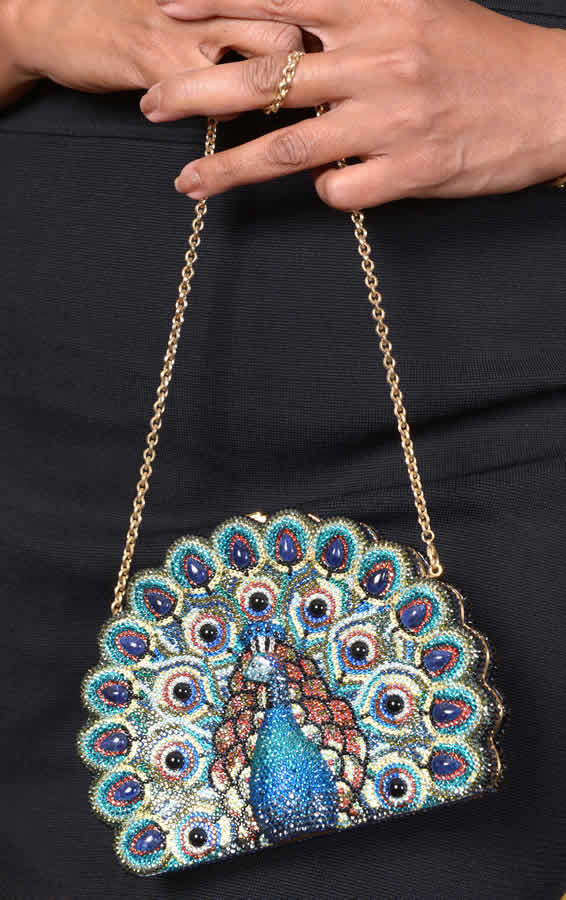
“The second reason I would collect,” Kannan says, “is when I think it’s really interesting the way she has designed something. Like a cat, for example. I’m not a big cat person but I like the way she has represented a cat. There has to be some element that absolutely gets to me and I feel I have to have it.”
Kannan also loves matching her Leiber bags to her dress and jewelry. For a venture capital event targeting women entrepreneurs in the summer of 2015, she wore a Donna Karan dress with a rock crystal necklace and smaller one underneath that mimicked her vintage Leiber Lucite purse with a shattered glass effect. The message she set out to evoke: shattered glass ceiling.
For an Alzheimer’s fundraising gala, Kannan wore a custom sari and carried the Judith Leiber “cloud bag,” which she thought resembled a brain. “Saini,” says Heritage Auctions handbag expert Diane D’Amato, “always has the perfect jewel for every event.”
Enlarge
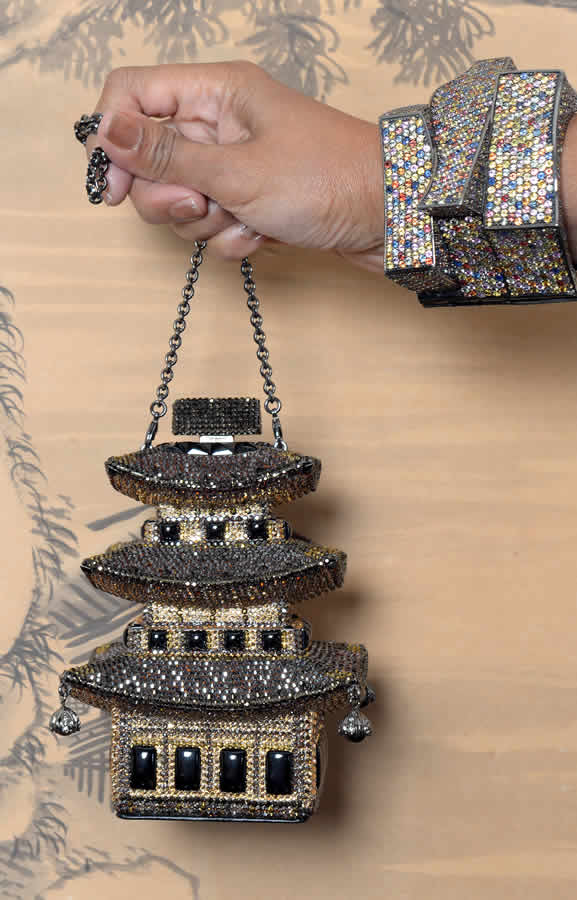
“The third reason I would buy is I have a bag in four colors, and then I find the fifth color. It’s like if you’re collecting the suit of cards, you better have the spade or the club. I always ask, ‘Where does this fit into my collection’ and ‘Does it fit in at all?’”
Unique in Kannan’s collection is her ability to curate “sets” – and many of them even include matching pillboxes or brooches, also designed by Leiber.
MUTUAL ADMIRATION
Judith Leiber’s pieces have been compared to the work of legendary Russian jeweler Peter Carl Fabergé. Many are in the permanent collections of important museums such as the Metropolitan Museum of Art, the Smithsonian, the Corcoran Gallery, and the Victoria and Albert Museum, among others.
COLLECTING LESSONS
Here are six critical things Saini Kannan says she’s learned as a collector:
►On deciding what to collect: Start by viewing the object with a detached gaze, without preconceptions, and in a state of total receptivity. Interpret what you see, feel a deeper sense.
►Start with individual pieces, then move to a collection and then a curated collection.
►In this age of online purchases, try to view as many objects as possible in person.
►Network with other collectors.
►Meet (if possible) the artist. Read about and research the artist, the genre, the techniques, technology, and the cultural and historical backgrounds related to the artist or the object of interest.
►Understand the best way to store your collection – temperature, humidity and acid-free requirements.
Kannan is such a prominent Leiber collector that she often loans her bags to fundraisers and museums. Bags from Kannan’s collection were displayed last year at the Leiber Collection’s “Magnificent Obsession” exhibit in East Hampton, N.Y. Kannan is also fundraising to make a documentary about Leiber, who started her company in 1963 and is now 96.
The two women share one of those rare, artist-to-artist friendships. They first met in 2012 when Kannan found Leiber’s museum on the internet and wrote to her. “I wanted to show her how I put things together,” she says, adding she flew out to East Hampton, where Leiber lives. “For both of us, it was more than a meeting. I was like, ‘Really? You’re the one who designed the rocket that went to the moon’ kind-of-thing.”
Enlarge
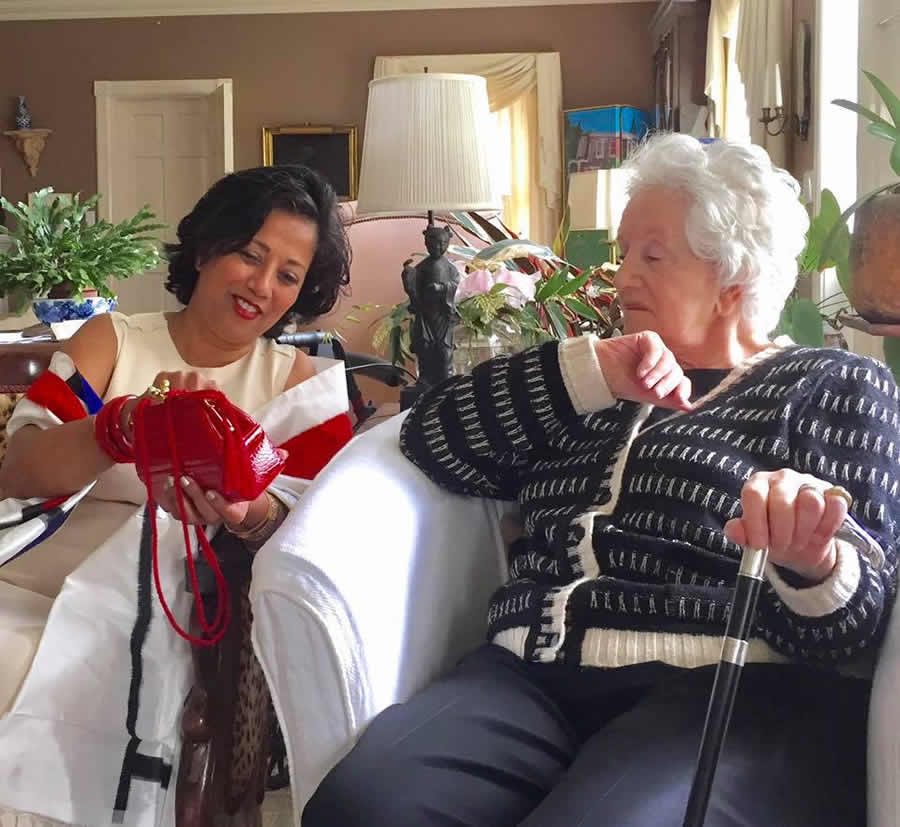
For Leiber, it’s always a delight to see how Kannan puts together her bags with thoughtful ensembles. Leiber even has an eye for some of the bags in Kannan’s collection. “Saini has a minaudière I made that was inspired by a painting by my husband, Gerson Leiber, which has a woman and a man at a cocktail party,” Leiber says. “I really would love to have this bag in our collection!”
When Leiber designed her final handbag in 2004 (she sold her company to a British luxury goods firm about 10 years earlier), Kannan attended the commemorative event. It proved to be the feather in her Leiber-collection hat. “My final reason for buying a bag is the story,” Kannan explains. “For instance, the last bag she designed was a peacock. It was her grand finale. So to me, I had to have that. I have it in two colors.”
 STACY SUAYA is a Los Angeles writer who has written for T: The New York Times Style Magazine and the Los Angeles Times.
STACY SUAYA is a Los Angeles writer who has written for T: The New York Times Style Magazine and the Los Angeles Times.
This story appears in the Spring/Summer 2018 edition of The Intelligent Collector magazine. Click here to subscribe to the print edition.

